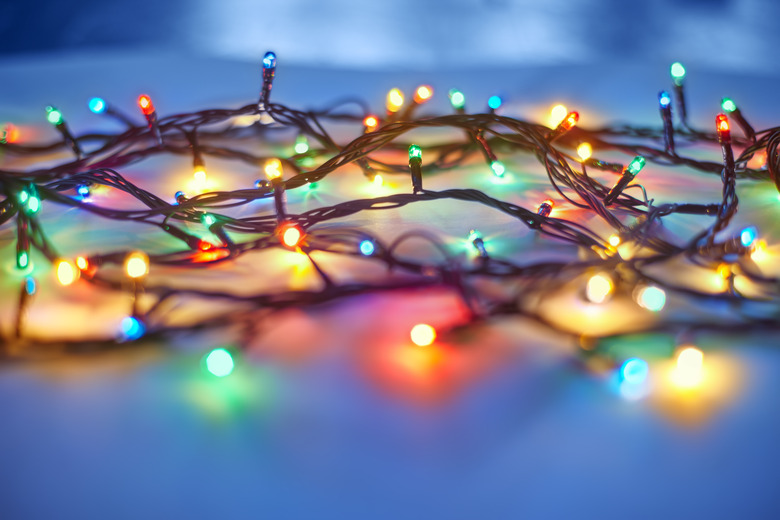How To Use A 9-Volt Battery To Power LEDs
You can use light emitting diodes (LED) in many applications to provide status lights and illumination. LEDs are true diodes, meaning that they will only conduct electricity in one direction. LEDs emit light at a single frequency (color), which you cannot modify. The brightness of an LED is directly proportional to the amount of current flowing through it, and LEDs turn on and off much more quickly than an incandescent bulb. To limit current, connect a resistor in series with an LED. Follow a few simple steps to power an LED with a 9-volt battery.
Step 1
Examine the data sheet for the LED you wish to use. Identify the specifications for maximum current (Imax) and typical forward voltage (Vf typ).
Example: 9-volt battery LED Imax = 20milliamps (mA) Vf typ=2 Volts (V)
Step 2
Determine the voltage drop across the resistor (Vr). This voltage will equal the battery voltage (Vbatt) minus the Vftyp for the LED.
Example: Vr=Vbatt-Vftyp Vr=9 volts – 2 volts = 7 volts
Step 3
Calculate a working current (Iwork) for the LED—typically about 75 percent of the maximum current.
Example: Iwork= Imax x 0.75 Iwork=20mA x 0.75 = 15mA
Step 4
Choose a resistor value to allow 15mA of current to flow across.
Example: I=V/R ( Ohm's Law: Current = Voltage/Resistance) 15mA = Vr/R 15mA = 7 volts/R R=466 ohms
Step 5
Select a 466-ohm resistor, or the next highest value of standard resistor.
Step 6
Connect one end of the resistor to the positive terminal of the battery.
Step 7
Connect the other end of the resistor to the positive (anode) terminal of the LED.
Step 8
Connect the cathode of the LED to the negative terminal of the battery. The LED should illuminate.
Things Needed
- 9-volt battery
- Resistor
- LED
- LED specifications
TL;DR (Too Long; Didn't Read)
If you do not have access to the LED specifications, start with a 2.2K resistor and work your way to smaller values.
The cathode of an LED is the smaller lead, located near a flat side of a round LED.
Connect multiple LEDs in series. Subtract each of their Vf typ from the battery voltage to calculate Vres.
Warning
Do not exceed the maximum current of an LED by using too small of a resistor value; this will destroy the LED.
References
- "Electronics for Dummies;" Cathleen Shamieh and Gordon McComb; 2009
Cite This Article
MLA
Hazleton, Andrew. "How To Use A 9-Volt Battery To Power LEDs" sciencing.com, https://www.sciencing.com/use-9volt-battery-power-leds-5724168/. 13 March 2018.
APA
Hazleton, Andrew. (2018, March 13). How To Use A 9-Volt Battery To Power LEDs. sciencing.com. Retrieved from https://www.sciencing.com/use-9volt-battery-power-leds-5724168/
Chicago
Hazleton, Andrew. How To Use A 9-Volt Battery To Power LEDs last modified March 24, 2022. https://www.sciencing.com/use-9volt-battery-power-leds-5724168/
